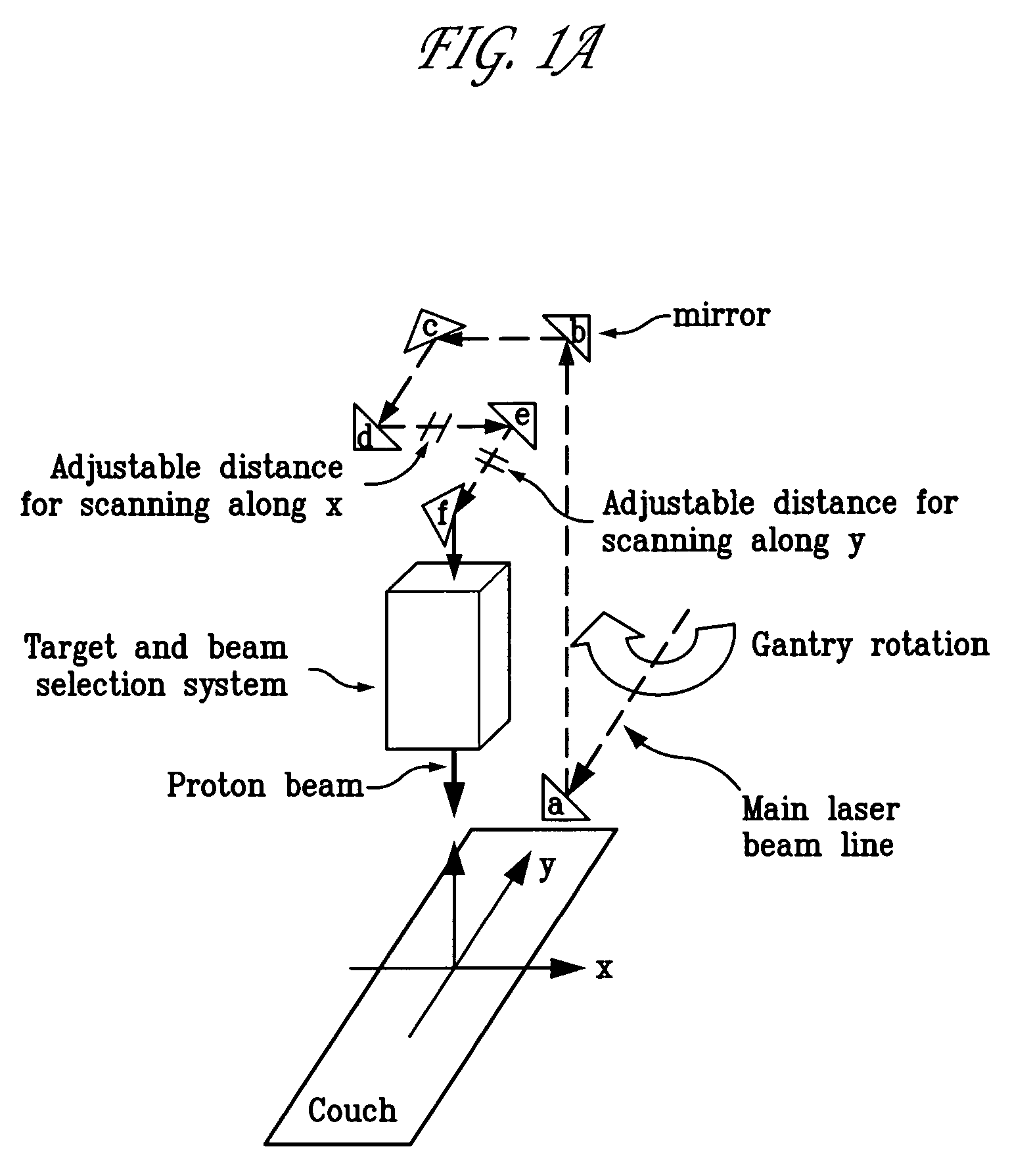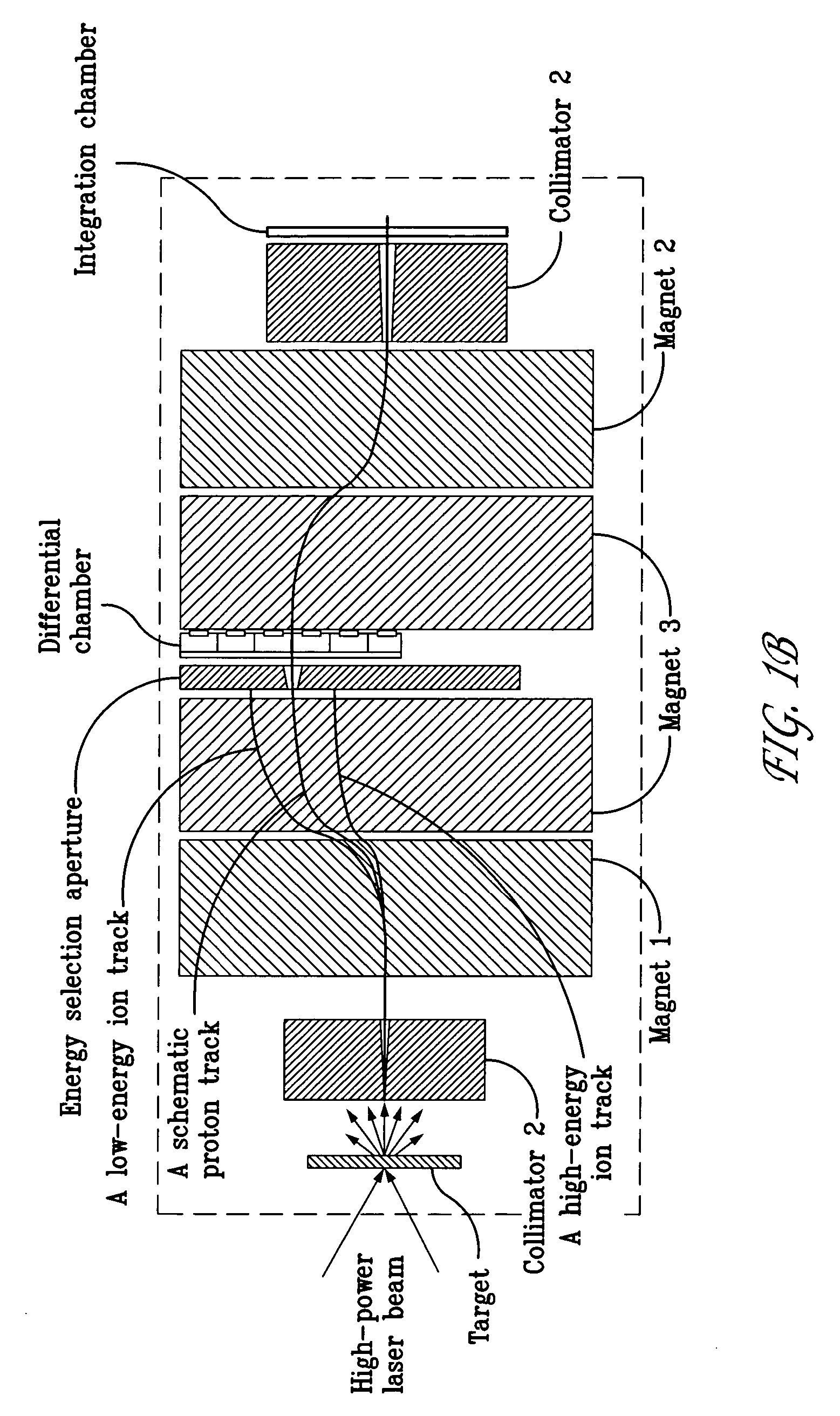Method of modulating laser-accelerated protons for radiation therapy
a radiation therapy and laser-accelerated protons technology, applied in the field of modulating laser-accelerated protons for radiation therapy, can solve the problem of difficult to use laser-accelerated protons for therapeutic treatments without prior proton energy selection, and achieve the effect of minimizing radiation and maximizing polyenergetic proton radiation
- Summary
- Abstract
- Description
- Claims
- Application Information
AI Technical Summary
Benefits of technology
Problems solved by technology
Method used
Image
Examples
examples
[0143]The examples described below represent a 2.5D modulation / optimization for providing a uniform prescriptive dose of polyenergetic proton beamlets for a prostate tumor. In these examples, the energy is first modulated to achieve the SOBP for each beamlet and then the intensity is optimized of each modulated beamlet to achieve dose conformity (i.e., a uniform prescriptive dose).
[0144]Energy modulation calculations. A particle in cell (PIC) (Birdsall, et al., 1985, “Plasma Physics via Computer Simulation”, McGraw-Hill Book Company, Singapore) simulation code can be used as previously described (Fourkal et al., 2002) to determine the interaction of a high power laser with a solid high-density foil. Dimensionality of the problem and the importance of nonlinear and kinetic effects make analytical methods typically difficult to provide a detailed description of laser-plasma interactions. The PIC simulation in this case is an effective tool, which can shed light on the complicated prob...
PUM
 Login to View More
Login to View More Abstract
Description
Claims
Application Information
 Login to View More
Login to View More - R&D
- Intellectual Property
- Life Sciences
- Materials
- Tech Scout
- Unparalleled Data Quality
- Higher Quality Content
- 60% Fewer Hallucinations
Browse by: Latest US Patents, China's latest patents, Technical Efficacy Thesaurus, Application Domain, Technology Topic, Popular Technical Reports.
© 2025 PatSnap. All rights reserved.Legal|Privacy policy|Modern Slavery Act Transparency Statement|Sitemap|About US| Contact US: help@patsnap.com



